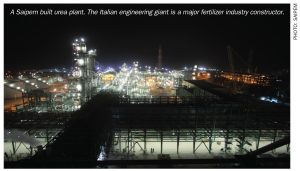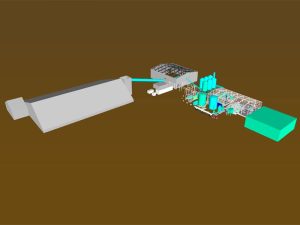
Ammonia-urea project gets funding approval
Russia’s Ammoni JSC has received funding approval for the Ammonia-2 plant at its Mendeleevsk complex in Tatarstan.

Russia’s Ammoni JSC has received funding approval for the Ammonia-2 plant at its Mendeleevsk complex in Tatarstan.

The Mosaic Company opened a new fertilizer distribution plant in Palmeirante, Tocantins, Brazil, in July.

Anglo American has set out three pre-conditions for a final investment decision (FID) on its Woodsmith polyhalite project.

The ammonia train at the under-construction Beaumont ammonia project in Texas is now 95% complete, according to owner Woodside.

Aliko Dangote, self styled “Africa’s richest man”, has signed a $2.5 billion partnership with the Ethiopian Government to build one of the world’s largest single-site fertiliser plants in Gode, Somali Regional State. The was signed on August 28th by Dangote Group and Ethiopian Investment Holdings, the government’s strategic investment arm. Under the agreement, Dangote Group will hold a controlling 60% equity share, with EIH taking the remaining 40%. EIH says that the facility will be “among the top five largest urea production complexes globally… with production facilities boasting a combined capacity of up to three million metric tons per annum.” The project will take gas feedstock via pipeline from the Calub and Hilala gas fields, with provisions for future expansions into ammonia-based fertilisers.

Caitlyn India Pvt Ltd (CIPL) has announced a $46 million investment to build a 50,000 t/a phosphoric acid plant in India. The plant aims to reduce import dependence and boost the country’s fertiliser self-sufficiency. Commissioning is planned for the financial year 2027. The facility, to be set up in a port-accessible industrial zone in southern India, will use hemihydrate-dihydrate technology to produce high purity phosphoric acid and cleaner gypsum by-products. A captive sulphuric acid unit will also be included to support efficient operations. Initially, the acid produced will supply Indian fertiliser manufacturers, with plans for captive use in future fertiliser production.

The Belarusian government has nationalised and is fast-tracking the two million t/a capacity Slavkaliy project.

Italy’s Saipem has won a front-end engineering design (FEED) contract from Sonatrach for an integrated phosphate fertilizer project in Algeria.

New ownership structure and plant expansion for Northern Nutrients following investment by Shell Trading Canada

OCP Group subsidiary OCP Nutricrops has announced a major investment to expand its phosphate fertilizer production capacity by nine million tonnes by 2028.